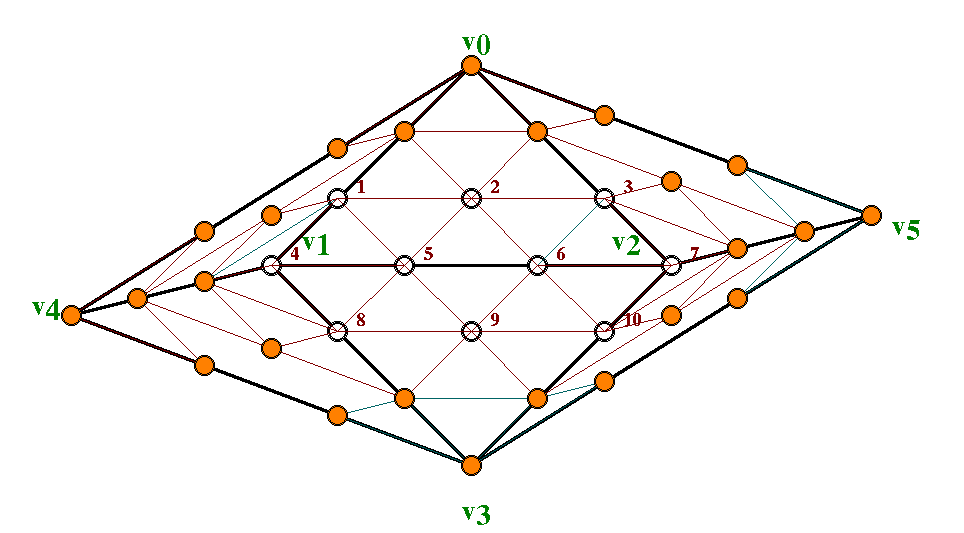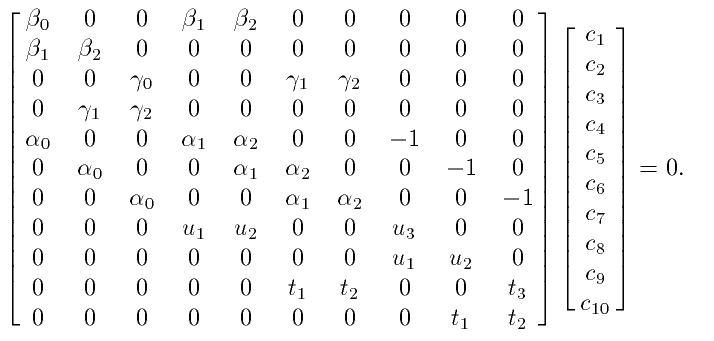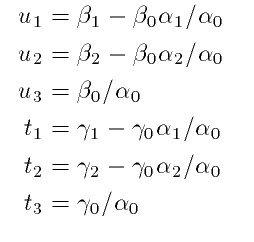| Department of Mathematics, University of Utah | |||||||

|
|

|
|||||
| Department of Mathematics, University of Utah | |||||||

|
|

|
|||||
Let us consider the edge configuration e44 in more detail,
as indicated in the nearby figure.

The dimension of S13 on that configuration is
To embed the configuration into a triangulation we need to
impose 16 conditions on the boundary of e44. Thus we should
be left with one free parameter. To see that this is indeed
so we need to analyze a system of smoothness conditions.
Let's label the vertices as indicated by
v 0, v 1, v 2, v
3, v 4, v 5
in the Figure, and the unknowns as c i
where the subscripts are given in dark red type in the
figure. We describe the geometry of the configuration in
terms of barycentric coordinates as follows:

Suppose now that a spline is specified on the outside of
e44. That means that the Béezier ordinates
corresponding to domain points marked in gold are determined
by the smoothness conditions. Let us suppose they are all
zero. There must be a space of dimension 2 of splines on
e44 that satisfy these homogeneous boundary conditions. The
available Béezier (marked as black circles with white
interiors must satisfy the smoothness equations:

This is a homogeneous system of eleven equations in 10
unknowns that is supposed to have a one dimensional solution
space. Thus the rank of the matrix should be nine. To see
this we need to identify a nine by nine submatrix that is
non-singular. For example, if we omit the first two rows
and the first column we obtain (using symbol manipulation)
the determinant

However, the barycentric coordinates of the various points
with respect to the various triangles are not independent.
Using the substitution

we find out that this determinant is actually zero. (The
reason for including this example is to illustrate that the
determinant of a submatrix may be zero in a non-obvious
way.) However, if we omit instead the first and the third
row, as well as the first column, we obtain

We now have to show that this determinant is non-zero. We
may use some properties of the barycentric coordinates,
e.g.,

This seems to be a formidable task. I've looked at all possibilities of omitting two rows and one column, and none of these possibilities seems to lead to an expression that's simple. However, I would expect that given sufficient motivation this problem is tractable.